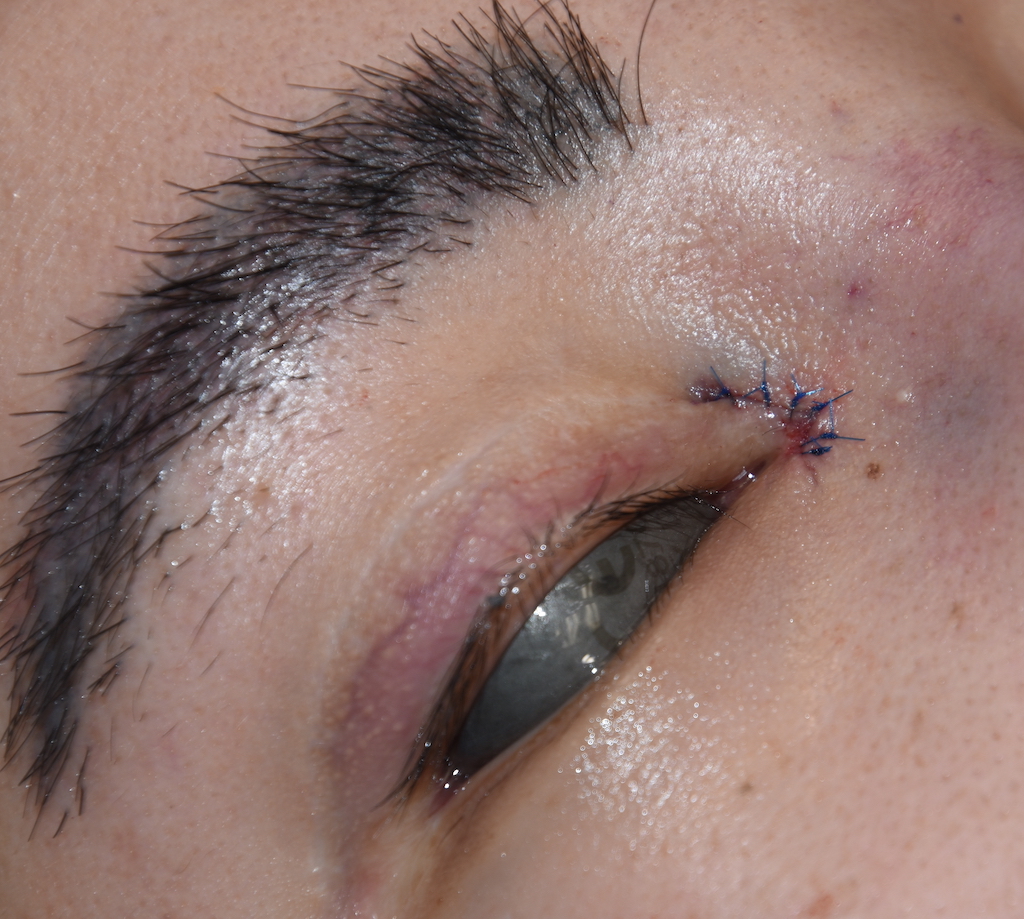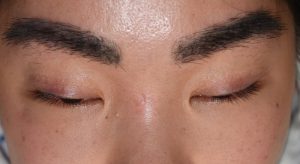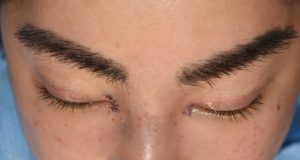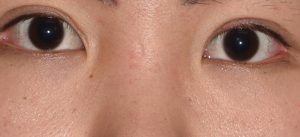Background: One of the recognizable facial features is a web of skin that crosses the inner eye. (epicanthal fold) Such a fold of skin runs between the nose and the inner eyebrow.While small it creates a distinct eye appearance. Its presence is most commonly associated with the Asian face but this is not the only type of face in which it appears. It is often seen as a temporary eye feature in infants and children of all ethnicities before the bridge of the nose develops to pull the skin away from the inner eye corner. It is also seen as an identifying facial feature in certain medical conditions such as Down, Turner and Noonan syndromes.
Correction of epicanthal folds is done by a medial epicanthoplasty procedure. Often called eye enlargement surgery, because the fold makes the eye appear horizontally smaller, it opens up the inner eye by uncovering the medial canthal region through a variety of skin rearrangement techniques. While often called ‘web removal’ the reality is that the appearance of the fold is reduced or eliminated by rearranging the webbed skin. Pure excision of the web would likely cause adverse scarring and web recurrence from scar banding.
For such a small facial area the medial epicanthoplasty has generated a lot of different technical variations. All use the creation of a skin flap which can be divided into two types, a transposition and an advancement flap. How the skin flap is created is less important than the release of the tension caused by the underlying subcutaneous tissue and preseptal orbicularis muscle. It is important to keep the skin incisions and the creation of the skin flaps small to lower the risk of scarring.
Case Study: This Asian female was undergoing a variety of facial reshaping procedures and desired an epicanthoplasty to get rid of her epicanthal folds. She had a prior double eyelid surgery.

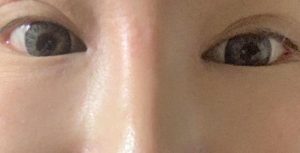
The medical epicanthoplasty is a small but very delicate procedure to get good results with minimal scarring. It is often done as part of double eyelid surgery or after as in this case. It is important to blend the scar line into the upper eyelid scar line whether the two are done together or separately.
Case Highlights:
1) Inner eye webs or epicanthal folds, while most commonly associated with the Asian face, can occur in other ethnicities and medical conditions as well.
2) Many different techniques for the epicanthoplasty procedure exist but none have proven convincingly superior over others provided that the tethered deeper tissues have been released.
3) The most important principle of medial epicanthoplasties is to limit the length of the incisions and size of the skin flaps as the inner eye tissues are prone to adverse scar formation.
Dr. Barry Eppley
Indianapolis, Indiana

